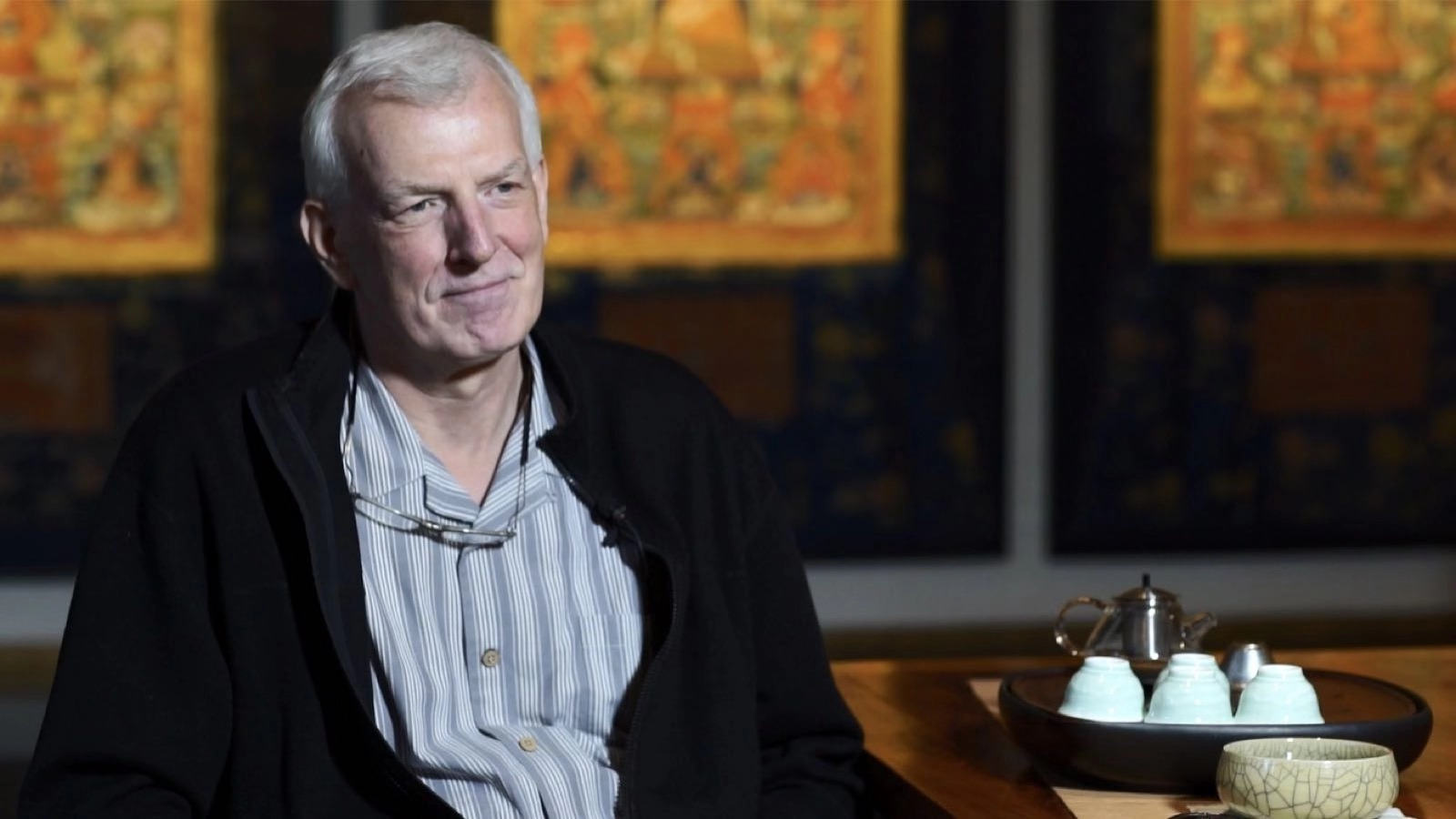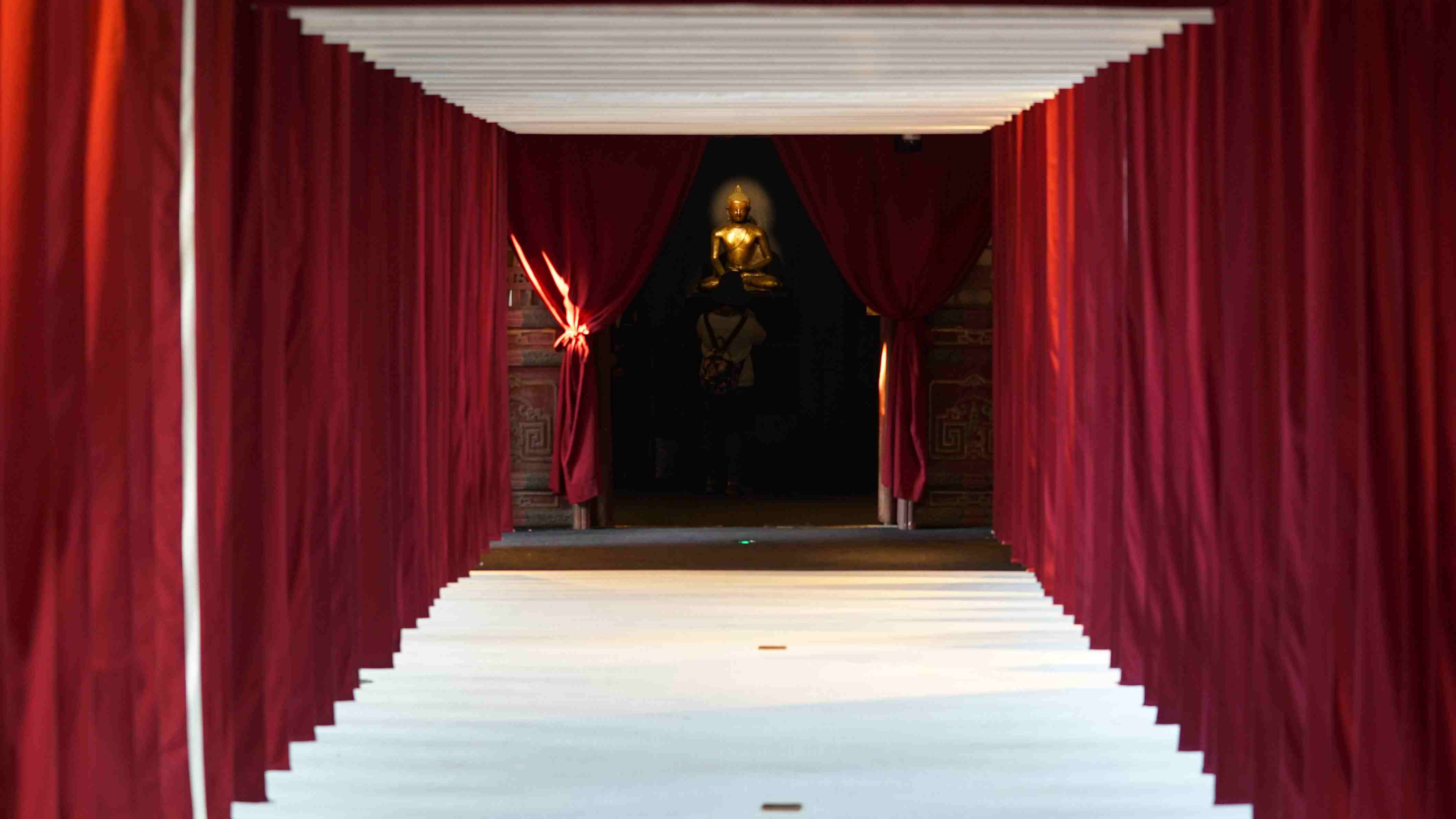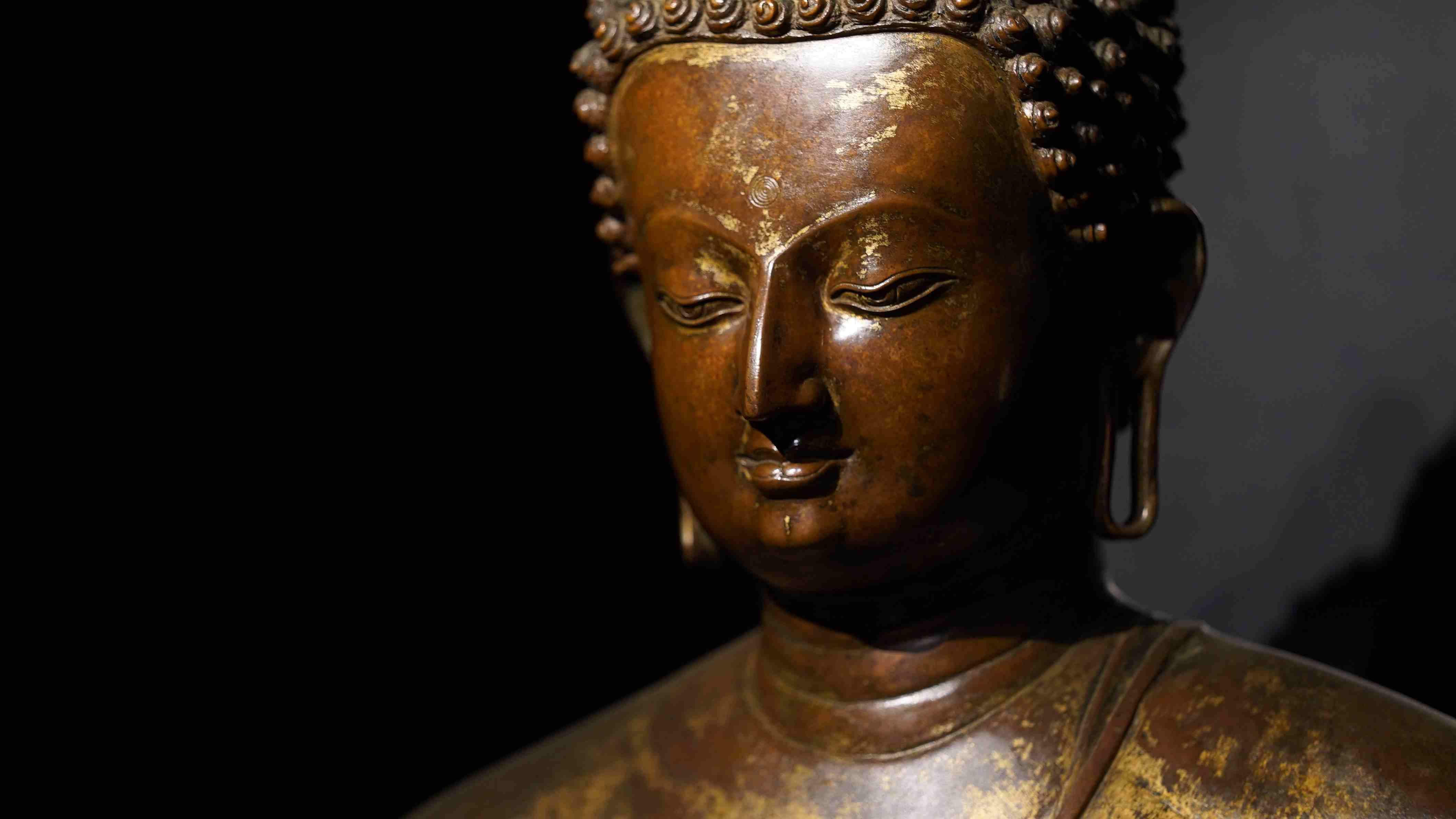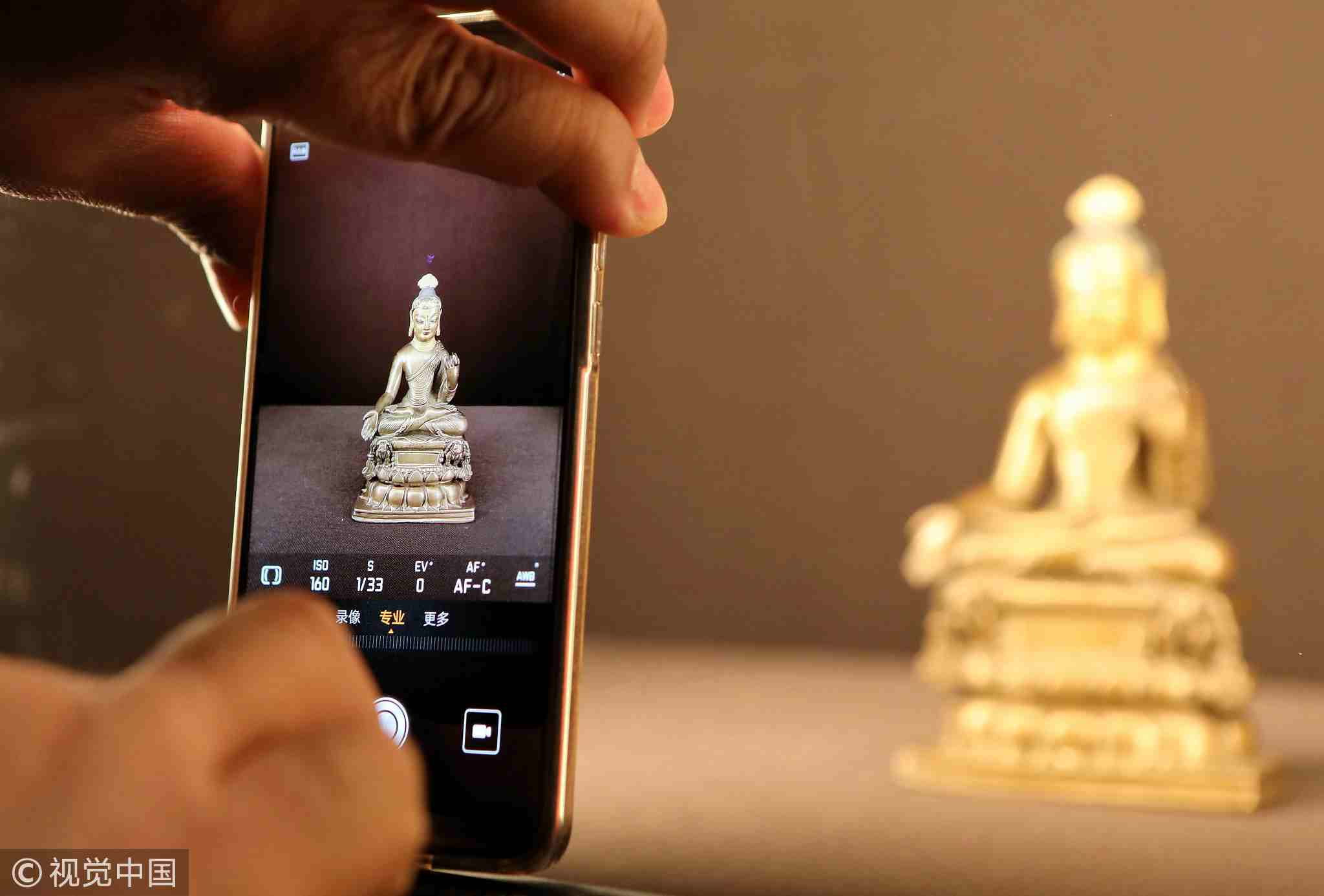
Arts
18:57, 31-Oct-2018
Exclusive: Zhiguan Museum director discusses Himalayan art
Updated
18:57, 03-Nov-2018
By Ye Qing
02:50

"The Light of Buddha – Buddhist Sculptures of the Palace Museum and Zhiguan Museum of Fine Arts" opened at the Palace Museum of the Forbidden City on October 23, 2018.
A total of 112 exhibits are on display, selected from the Palace Museum, Zhiguan Museum of Fine Arts and some private collections.
CGTN interviewed Jeff Watt on Tuesday, the director and chief curator of the Zhiguan Museum of Fine Arts in Beijing, a visiting professor at Sichuan University, and executive director of the non-profit responsible for the Himalayan Art Resources website. Watt shared his expertise with CGTN on how to comprehend exhibitions and the future development of Tibetan Buddhist art.
Background of the exhibition
Buddhism and its arts originate from India. Buddhist art, diffused into the Himalayas as the religion spread, is integral to various cultures in the Himalayas and their characteristics.
The exhibits come from ancient northwest India, central India, northeast India, Nepal and China's Tibet Autonomous Region, respectively. The time span of the exhibits ranges from the 2nd century to the 15th century, showing the source of Tibetan Buddhist art and its rich artistic features.
In recent years, Tibetan Buddhist art has attracted more and more attention and appreciation due to its unique charm.

There are two parts of the exhibition, earlier pieces are in one area and the later pieces in another. /CGTN Photo
There are two parts of the exhibition, earlier pieces are in one area and the later pieces in another. /CGTN Photo
Tibetan Buddhism is part of the Himalayan culture, with deep ties to the cultures of central Asia and western Asia, while understanding Tibetan Buddhism also requires grasping this multicultural context.
Also, the whole exhibition is based on the two major units of Tibetan art style, including Central Tibet and Western Tibet.
"Actually, as all exhibitions are divided according to space, we have to use what space we have in hand," Watt told CGTN.
"Earlier pieces are in one area and the later pieces in another, so it is simply a chronological distinction," he added.
How to get involved in the exhibition
If visitors want to study further, the exhibition hall features text introductions in each unit.
There is no extra charge for this exhibition in the Palace Museum. Watt told CGTN that he hoped everyone would formulate their own ideas after viewing the exhibition.
"I don't agree that the exhibition is a little bit esoteric or difficult to approach," Watt said, discussing the public's expectations and behavior when viewing the exhibit.
He said that some of the visitors simply look at the unfamiliar objects in amazement, while others pose questions.

A 10th-century statue of Sakyamuni. /CGTN Photo
A 10th-century statue of Sakyamuni. /CGTN Photo
"But we can’t allow too much intellectual activity to overwhelm our experience of actually seeing objects that we’re not so familiar with," Watt indicated.
For experts or those who want to research deeper, Watt provided three degrees of understanding Himalayan art: art history, iconography, and religious studies and philosophy. "For Himalayan art, you also have to have an understanding of philosophical studies, or religious studies in the West, where you have to know who were the subjects, what's the narrative, what's the overall context to the community or to the culture that the object is being made in."
Future of Tibetan Buddhist art
Luo Wenhua, a researcher at the Palace Museum and director of the Research Center for Tibetan Buddhist Heritage of the Palace Museum, said that the criteria for selecting the collection in this exhibition are the place of origin, age, and quality, and that each piece is very exquisite. Meanwhile, some of the rarest collections come from private collectors or Zhiguan.
There are many organizations and individuals who do not have a strong enough voice to promote the importance, quality and history of this kind of art, so they collaborate to make their voices heard, Watt said.

A visitor takes a photo of the exhibit. /VCG Photo
A visitor takes a photo of the exhibit. /VCG Photo
Just like the theme of the exhibition, many of the pieces displayed feature a high level of execution and artistry.
Likewise, the exhibition not only enables the public to view and appreciate these artistic masterpieces but also provides a platform where scholars and amateurs can examine, research and communicate.
(Top Image: Jeff Watt, director and chief curator of the Zhiguan Museum of Fine Arts, talks to CGTN on October 30. /CGTN Photo)
(Video edited by Lin Zihan)

SITEMAP
Copyright © 2018 CGTN. Beijing ICP prepared NO.16065310-3
Copyright © 2018 CGTN. Beijing ICP prepared NO.16065310-3